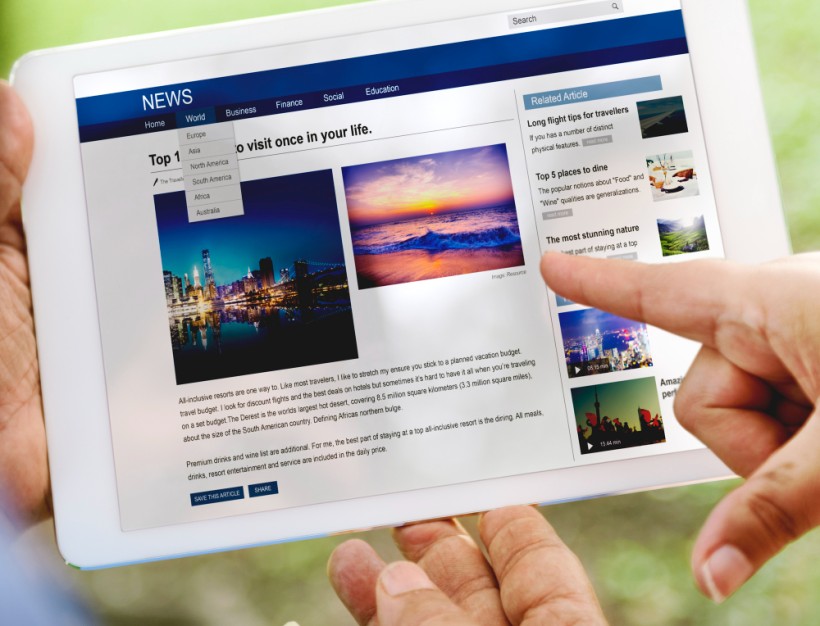AI is no longer a “nice-to-have” in marketing. Globally, brands are projected to spend over $100 billion on AI-driven marketing by 2030 — and African teams are already plugging these tools into their workflows.
In Lagos, Accra, and Lusaka, marketers are already building AI into their daily grind. Open a laptop in a co‑working space and you’ll likely see ChatGPT drafting ad copy, Gemini suggesting keywords, or Claude pulling together research notes.
This is because it saves time. AI trims hours off repetitive tasks, freeing marketers to focus on creativity and strategy. However, the way adoption is happening tells an even bigger story. Most teams are figuring new things out with AI and it has become part of their workflow.
However, unless teams move from casual use to structured strategy, they risk missing its full value.
The State of AI Adoption Among African Marketers
Over the past 18 months, there has been a surge in AI adoption within the marketing space — from writing and design to research and media buying. Adoption is highest in West Africa, particularly Nigeria, where pressure to deliver quick results in competitive industries has made AI tools essential.
This is why we launched the African Marketers AI Report in partnership with the Smarketers Hub. Among the 100 survey respondents, 71% said AI tools are already used regularly by everyone on their teams. Another 14% said usage was occasional, while a different 14% said only a few people used AI often. Only one respondent said AI wasn’t being used at all, with Nigeria, Ghana, and Zambia leading the way.
Many marketers admit they’re still improvising with no clear policies on when or how to use AI. Some worry about plagiarism or data leaks, while others aren’t sure if clients will accept AI-generated work.
What’s clear is that AI has shifted from an optional experiment to an everyday companion — a change that no serious marketer on the continent can afford to ignore.
How Marketers Are Using AI Today
When we look at how African marketers actually use AI in 2025, the picture is both practical and revealing. Our survey shows that 95% of respondents reach for ChatGPT, making it the undisputed favorite. Gemini follows at 55%, while Claude comes in at 42%.
Other tools like Copy.ai, Jasper, and DALL·E pop up here and there, but large language models dominate the field.
The most common application is content. A full 82% of marketers say content creation is their number-one use case, whether it’s drafting blog posts, social captions, or campaign ideas. About 25% use AI for ad copy, 22% for audience research, and 18% for SEO. Even smaller tasks like reporting, analytics, and media planning are starting to see AI’s influence, though adoption there is slower.
The time savings are striking. About 41% of marketers report saving 4 to 6 hours every week, while 18% say AI gives them back more than ten hours a week.
For a junior associate juggling endless drafts or a freelancer managing multiple clients, that’s the difference between working late into the night and clocking out on time. It also means creative energy can be redirected toward strategy, experimentation, or polishing campaigns instead of being eaten up by repetitive work.
Still, the focus on content also reveals the limits of today’s adoption. Marketers are quick to lean on AI for the tasks that feel safe and familiar — writing, captions, quick research — but far fewer are applying it to strategy, analytics, or automation.


Barriers Slowing Deeper AI Adoption
For all the excitement about AI, there are clear roadblocks keeping African marketers from moving beyond the basics. About 31% of respondents don’t know where to start, 26% say time is the biggest obstacle, 18% say budget is an issue and 19% cite a lack of good training resources.
And when it comes to skills like technical SEO, media buying, or even writing good prompts for AI, many people admitted they’re still struggling. The common reasons? Not enough time, unclear learning paths, and not having the right resources.
Finally, there’s the issue of structure. Most teams don’t have clear policies, playbooks, or guidance from leadership. There’s no clear direction from leadership, no shared workflow, and no real structure around how to use AI. This leaves marketers experimenting individually, with no shared standards for prompts, data use, or measuring impact. The result is inconsistent outcomes and lingering doubts about whether AI is truly worth the investment.
Where Teams Are on the AI Maturity Curve
While adoption is high in 2025, maturity is still low. Most teams have experimented with AI tools, yet only a few have built the depth of skills or structured processes needed to use them strategically. To put this in perspective, we frame AI maturity across three stages—Beginner, Intermediate, and Advanced. Progress isn’t measured by the number of tools in use, but by how seamlessly AI is integrated into everyday workflows and decision-making.
Beginners are those dipping their toes in using AI for brainstorming, drafting, or captions, but without structure or leadership support. Their work often needs heavy re‑editing, and confidence is low. This stage is common among interns, junior marketers, and small freelance teams who are experimenting but not yet embedding AI deeply into workflows.
Intermediate teams are more adventurous. They use AI for broader tasks like SEO, ad copy, or campaign ideas, and they’re starting to notice time savings. But adoption is uneven. Some individuals excel while others lag behind, and workflows aren’t documented. This stage represents the bulk of African marketers today — curious, committed, but still improvising.
Advanced teams are rare. These are the ones who treat AI as a true team member. They’ve built internal playbooks, defined where AI fits into the process, and trained their people to use it consistently. Their outputs are polished, their ROI is tracked, and leadership is involved in guiding adoption. In Africa, only a handful of teams currently sit here, often in larger agencies or forward‑thinking startups with more resources.
What this maturity curve shows is that the enthusiasm for AI is real, but the systems to sustain it aren’t there yet.
What Needs to Happen Next: Training, Strategy & Culture
The report leaves no doubt: African marketers are eager to use AI, but enthusiasm alone won’t carry them forward. What comes next is less about experimenting with tools and more about building systems that help teams use AI with purpose.
This shift requires three ingredients which are training, strategy, and culture, tailored to where a team sits on the maturity curve.
For those just starting out, the opportunity lies in demystifying AI. Beginners don’t need long lectures or complex frameworks. What they need are practical, hands-on sessions that show them how AI can make their day easier.
Teams in the middle need structure. They are already using AI but in uneven, undocumented ways. Here, the biggest gains come from codifying what works. That could mean creating shared playbooks, role-specific prompts, or agreed workflows that turn individual hacks into team standards.
Advanced teams face a different challenge. They’ve moved beyond dabbling and are weaving AI into multiple stages of their marketing process. For them, the task is sustaining momentum while staying ethical and efficient.
AI in African Marketing Will Thrive Only If It Matures
The challenge isn’t whether African marketers should embrace AI, they already have. The real question is how they will use it moving forward. If training, strategy, and culture come together, AI can strengthen creativity, productivity, and competitiveness across the industry. This piece captures only part of the story. The full African Marketers AI Report 2025 dives deeper into the adoption curve, barriers, and opportunities shaping the future of AI in Africa’s marketing industry. Explore the full report to see what’s next.





